Overview
Normal phase HPLC columns offer significant advantages for laboratories, particularly their remarkable capability to separate lipophilic compounds and improve resolution for polar substances. This makes them indispensable in pharmaceutical and environmental analyses. By employing polar stationary materials, normal phase HPLC achieves efficient separation, thereby ensuring high precision and reproducibility in analytical results. Such features underscore the importance of utilizing high-quality scientific instruments in laboratory settings, prompting labs to consider these columns as essential tools for achieving superior analytical outcomes.
Introduction
In the realm of analytical chemistry, the selection of chromatography methods plays a pivotal role in determining the accuracy and efficiency of laboratory results. Normal phase high-performance liquid chromatography (HPLC) columns, distinguished by their unique capacity to separate compounds based on polarity, present a multitude of advantages that can significantly enhance the analytical capabilities of pharmaceutical and environmental laboratories.
However, as with any scientific technique, a comprehensive understanding of both the benefits and limitations of normal phase HPLC is essential for its optimal application.
What challenges might laboratories encounter when implementing this method, and how can they effectively navigate these complexities to fully leverage its potential?
JM Science HPLC Solutions: High-Performance Normal Phase Columns
JM Science Inc. presents a comprehensive range of high-performance normal type HPLC tubes, meticulously engineered for diverse analytical applications. These tubes employ polar stationary materials, such as silica, facilitating efficient separation of compounds based on their polarity. Notably, the product line includes specialized structures tailored for specific analytes, including Shodex and CapcellPak types, which ensure exceptional resolution and reproducibility in analytical results.
The benefits of utilizing a normal phase HPLC column are significant. They excel at separating lipophilic compounds with a normal phase HPLC column, making them particularly suitable for pharmaceutical and environmental analysis applications. Furthermore, the incorporation of cyano columns enhances gradient elution capabilities, enabling faster equilibration compared to unbonded silica columns. This efficiency is crucial for laboratories aiming to optimize workflows and increase throughput.
Moreover, JM Science's collaborations with leading manufacturers ensure that their HPLC solutions meet the stringent requirements of modern laboratories, thereby enhancing both efficiency and precision in analytical processes. The unwavering commitment to quality and customer support positions JM Science as a trusted partner for laboratories seeking to elevate their analytical capabilities.
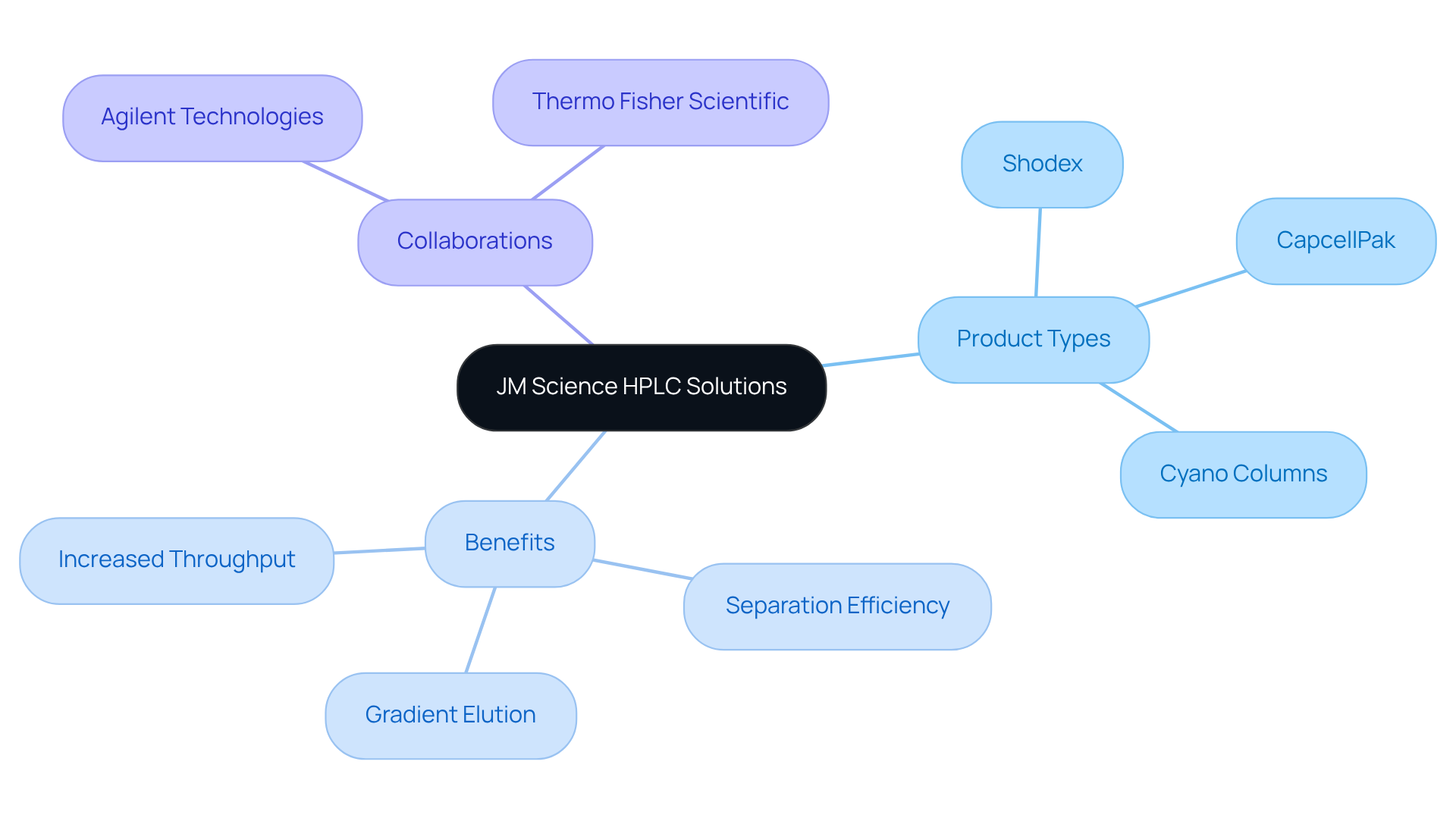
Understanding Normal Phase Chromatography: Principles and Applications
Normal phase HPLC column utilizes a polar stationary medium alongside a non-polar mobile medium, facilitating the separation of compounds based on their polarity. This configuration allows more polar compounds to interact more strongly with the stationary medium, which is why a normal phase HPLC column is particularly effective for analyzing lipophilic compounds. Understanding these foundational principles is crucial for comprehending compound behavior during separation, a key aspect in analytical chemistry.
Recent research underscores NPC's applications in pharmaceuticals, particularly in the analysis of drug formulations and environmental samples using a normal phase HPLC column. For example, NPC has been adeptly utilized to separate and quantify vitamin D in tablet forms, showcasing its robustness and accuracy, with average peak recoveries of 49.29% at 50% concentration and 99.42% at 100% concentration. Furthermore, NPC techniques are increasingly acknowledged for their efficiency in isolating complex mixtures, such as lipophilic compounds, particularly when utilizing a normal phase HPLC column in pharmaceutical development. Notably, the mass transfer kinetics in UPC is reported to be between 10 and 100 times faster than that of LC, highlighting its superiority.
The method's simplicity and effectiveness position it as a valuable instrument in research settings, particularly for those utilizing a normal phase HPLC column in high-performance liquid chromatography applications. Flow rates assessed for NPC methods have included 2.0 mL/min, while mobile mixtures like n-hexane/ethyl acetate ratios of 83:17, 85:15, and 87:13 have been employed with a normal phase HPLC column to enhance separation efficiency. This strategic use of mobile phases further amplifies the method's capability, establishing the normal phase HPLC column as a cornerstone in modern analytical practices.
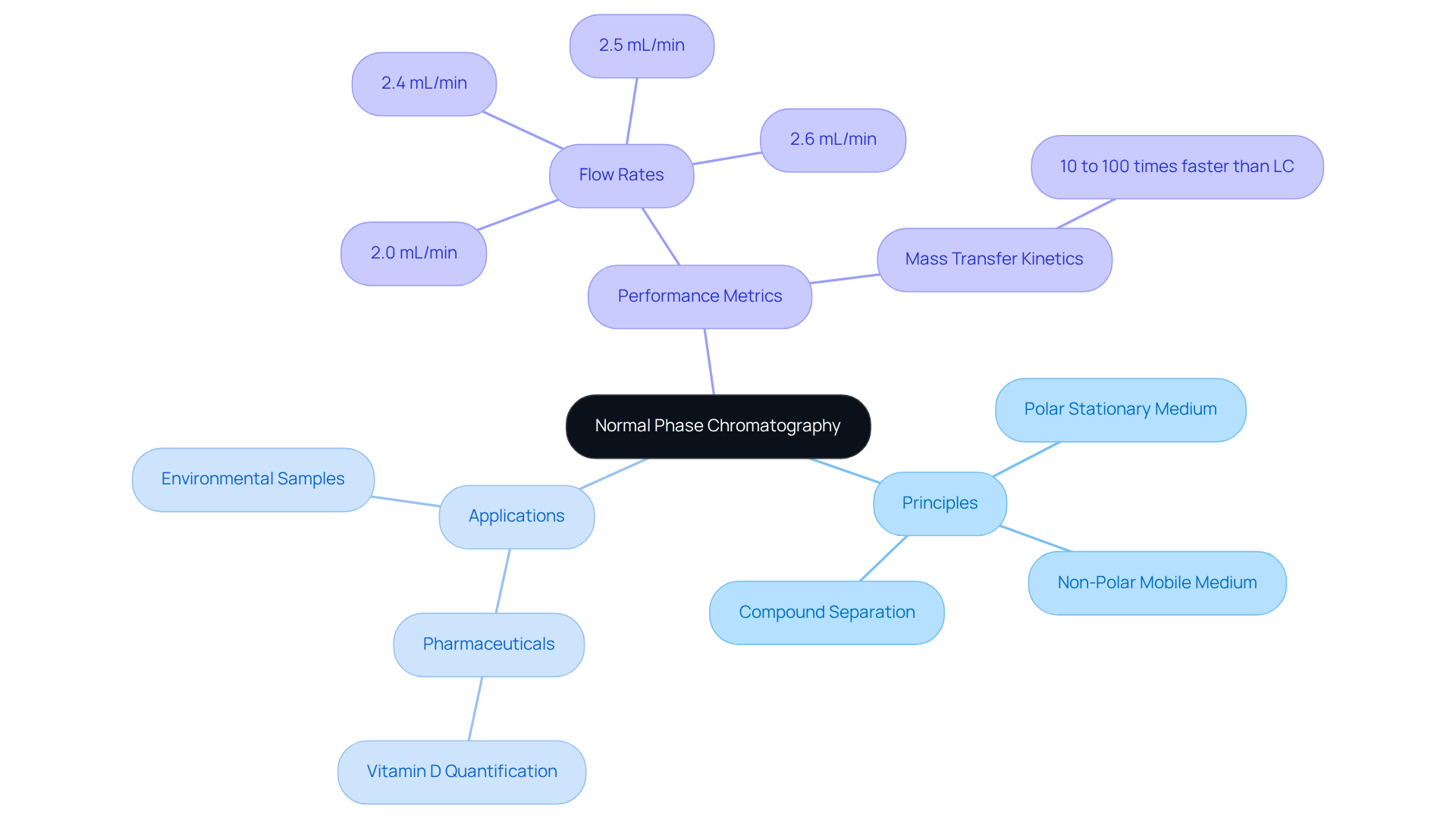
Key Applications of Normal Phase HPLC Columns in Pharmaceutical Labs
Standard normal liquid chromatography systems are indispensable in pharmaceutical laboratories, serving critical functions such as the separation of chiral compounds, the examination of lipophilic drugs, and the quality assurance of raw materials. This technique involves passing an analyte through a column filled with a non-polar solvent, like n-hexane, before it interacts with a stationary layer composed of silica molecules. This interaction enhances the efficiency of isolating active pharmaceutical ingredients (APIs) and impurities, thereby ensuring compliance with stringent regulatory standards.
The normal phase HPLC column is notable for its ability to separate positional isomers and stereoisomers, making it essential in drug formulation and stability studies where precise characterization of compounds is crucial. Furthermore, the method's reliability in providing accurate data underpins pharmaceutical quality control processes, guaranteeing that products meet safety and efficacy requirements.
To maintain the integrity of high-performance liquid chromatography analyses, implementing systematic troubleshooting strategies is vital. These strategies address potential issues that may arise during the analytical process. Additionally, proper sample preparation is critical for achieving precise results, further underscoring the meticulous approach required for effective chromatography applications.
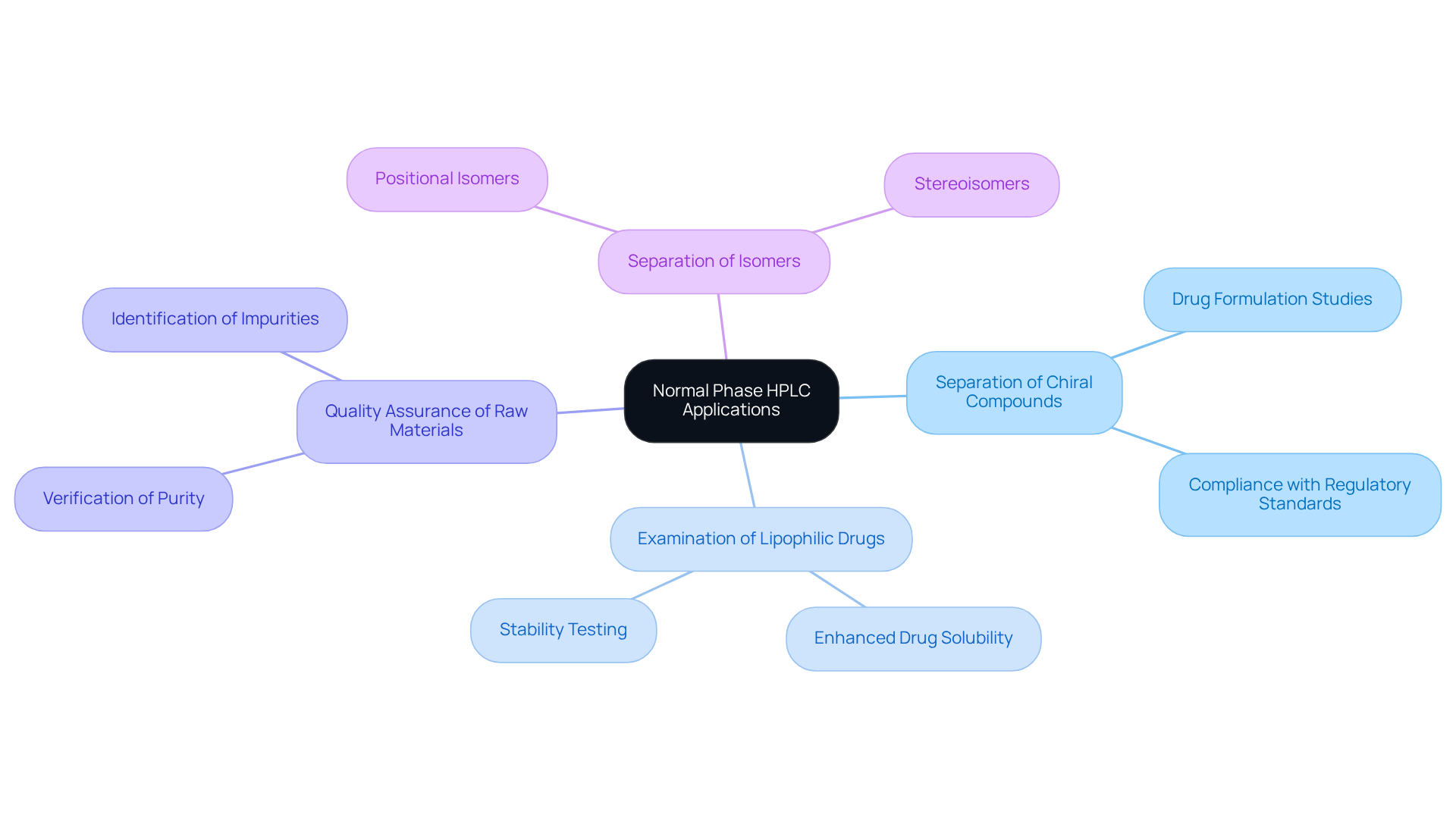
Advantages of Normal Phase HPLC Columns: Why Choose This Method?
Standard type chromatography media deliver significant advantages, particularly in the realm of analytical applications. They enhance resolution for polar substances, effectively distinguishing intricate mixtures while providing heightened sensitivity for specific analytes. Notably, these media excel in analyzing compounds that exhibit poor solubility in aqueous solvents, making them indispensable for the examination of lipophilic substances. Moreover, using a normal phase HPLC column facilitates improved control over separation conditions, leading to more consistent and reliable results. Given these compelling benefits, NPC emerges as a preferred choice in various analytical contexts, especially within pharmaceutical research.
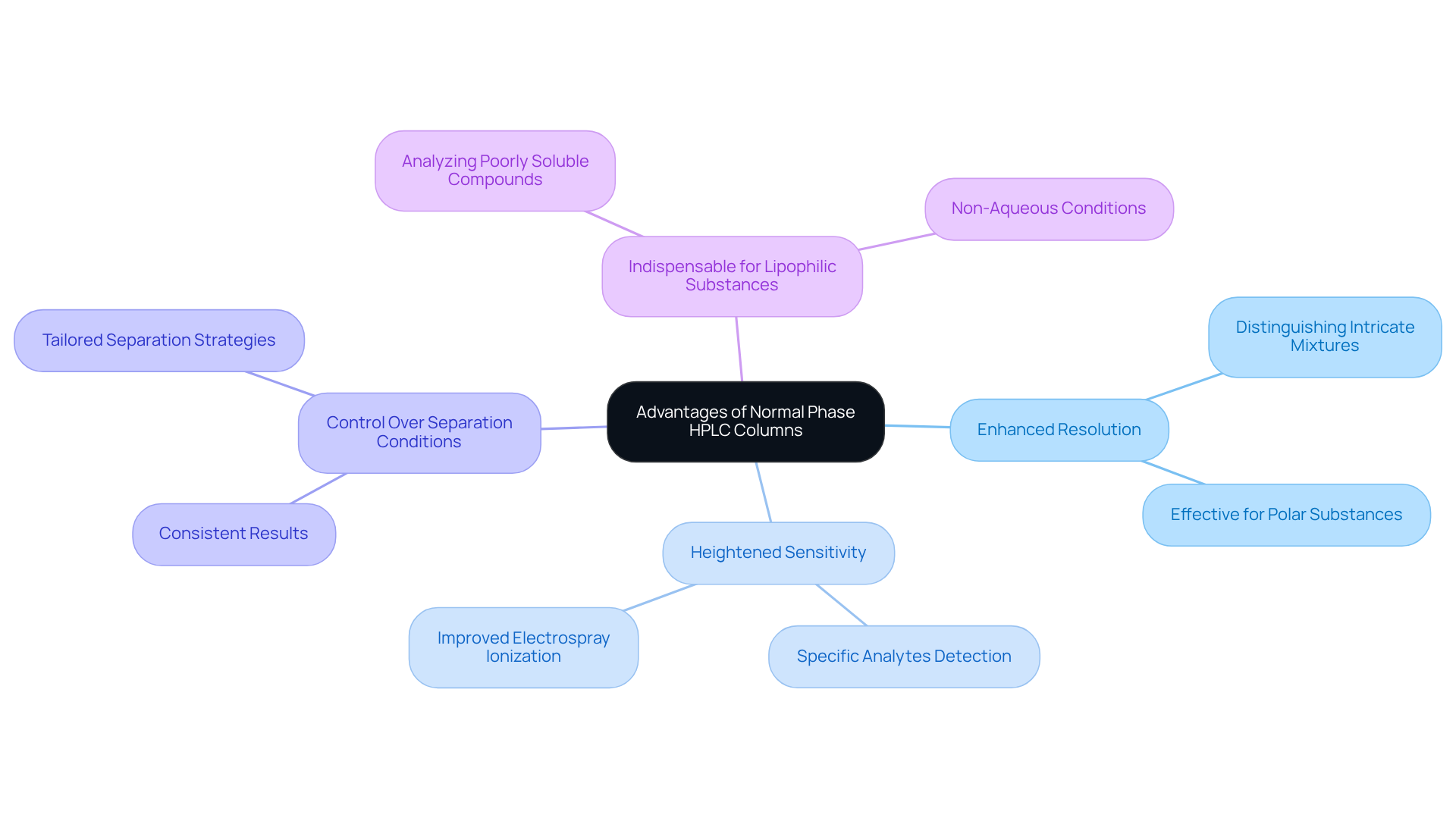
Limitations of Normal Phase HPLC Columns: What to Watch Out For
While beneficial for specific applications, normal phase HPLC columns present several drawbacks that facilities must consider. A primary concern is their sensitivity to water; even trace amounts can significantly alter retention times and compromise reproducibility. Research has shown a 4% increase in selectivity (α) with the addition of small quantities of water in the mobile medium, underscoring the critical need for meticulous moisture regulation. Variations in moisture can lead to inconsistent outcomes, posing a considerable challenge for testing facilities. Furthermore, standard chromatography typically relies on organic solvents, raising safety and environmental concerns that laboratories must address.
The efficacy of a normal phase HPLC column diminishes when dealing with highly polar compounds, which are often better suited for reversed chromatography. For instance, compounds like Rivastigmine hydrogen tartrate, requiring precise separation, may not achieve optimal results under standard conditions, as the resolution between its enantiomers is noted to be no less than four. In 2025, research facilities face additional challenges, including the need for method revalidation when transitioning between chromatographic techniques, as differences in stationary materials and mobile solvents can complicate the analytical process.
Practical examples highlight these challenges: research facilities have reported difficulties in obtaining consistent results with polar analytes due to the inherent limitations of standard methods. As David S. Bell, a leading consultant in chromatography, emphasizes, grasping the nuances of chromatographic techniques is vital for effective method development. Consequently, it is imperative for research facilities to thoroughly evaluate these factors when selecting chromatographic methods, carefully weighing the advantages of using a normal phase HPLC column against its potential drawbacks.
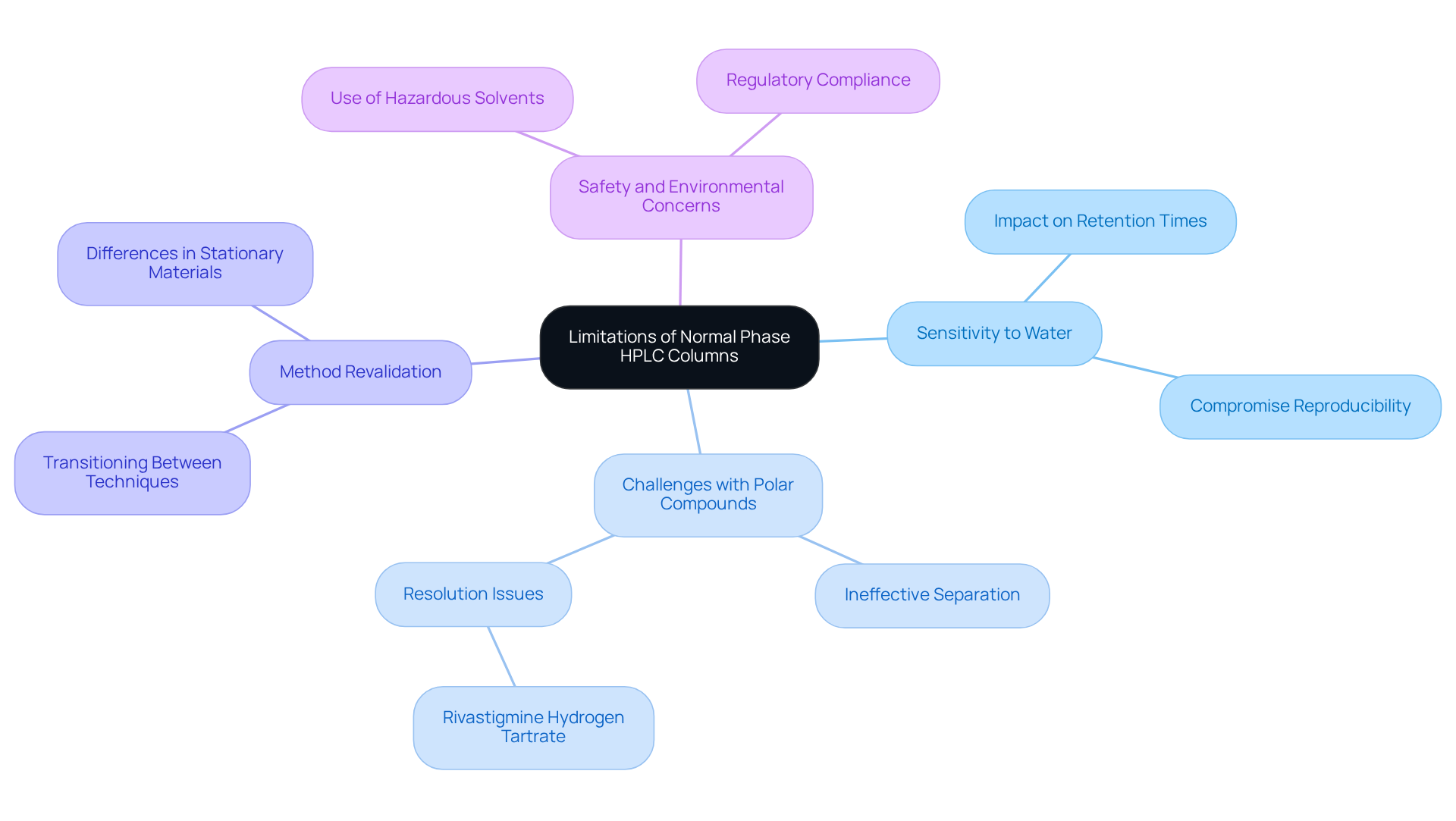
Maintaining Normal Phase HPLC Columns: Best Practices for Longevity
To maximize the lifespan of standard phase HPLC instruments, laboratories must adhere to optimal maintenance practices. Consistently rinsing the structure with appropriate solvents, such as methanol or acetonitrile, is essential for removing residual samples and impurities that can adversely affect performance. Furthermore, storing sections in suitable solvents that prevent microbial growth and deterioration is equally critical.
Overloading the section with samples can lead to premature wear; thus, maintaining optimal flow rates is crucial for prolonging durability. By implementing these strategies, laboratories can achieve more reliable analytical outcomes while significantly reducing costs associated with frequent column replacements.
Regular upkeep has been shown to enhance efficiency and prevent contamination, ultimately resulting in superior analytical results, as emphasized by experts in the field.
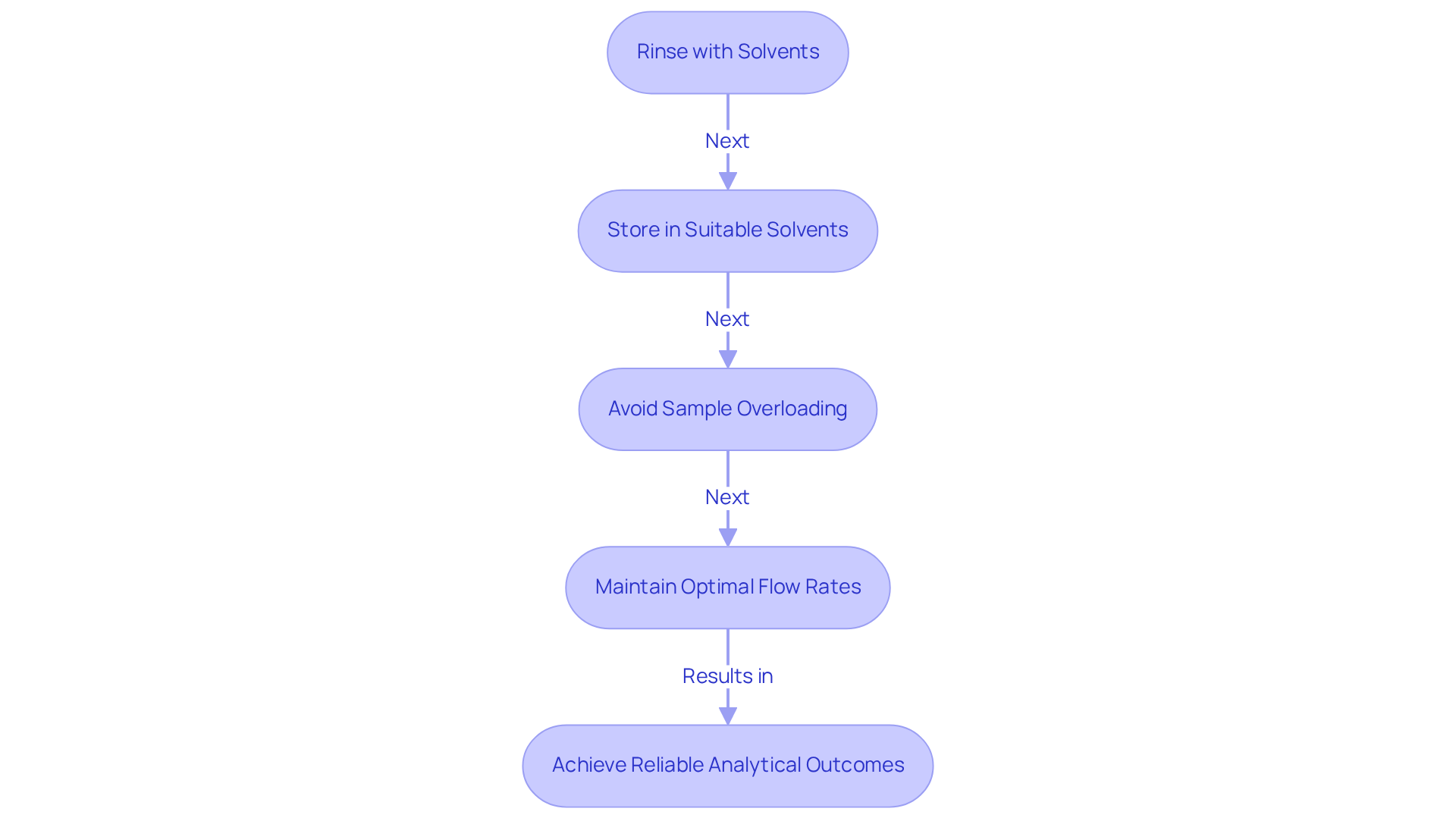
Troubleshooting Normal Phase HPLC Columns: Common Issues and Solutions
Common challenges encountered with a normal phase HPLC column include:
- Baseline noise
- Peak tailing
- Retention time variability
To effectively address these issues, laboratories must first investigate potential blockages within the system and ensure that the mobile phase in the normal phase HPLC column is free from contaminants.
Utilizing freshly prepared, high-purity HPLC-grade solvents is essential for significantly reducing baseline noise. Routine maintenance, such as cleaning the normal phase HPLC column with stronger solvents, can also help in resolving these problems.
Moreover, monitoring the water content in solvents is critical; even minimal amounts can result in considerable performance fluctuations. Degassing all components of the mobile phase is crucial to minimize baseline noise.
Implementing temperature control measures, such as employing a temperature-regulated oven, can effectively prevent peak broadening. By proactively tackling these prevalent challenges, laboratories can sustain optimal performance of the normal phase HPLC column and ensure the reliability of analytical results.
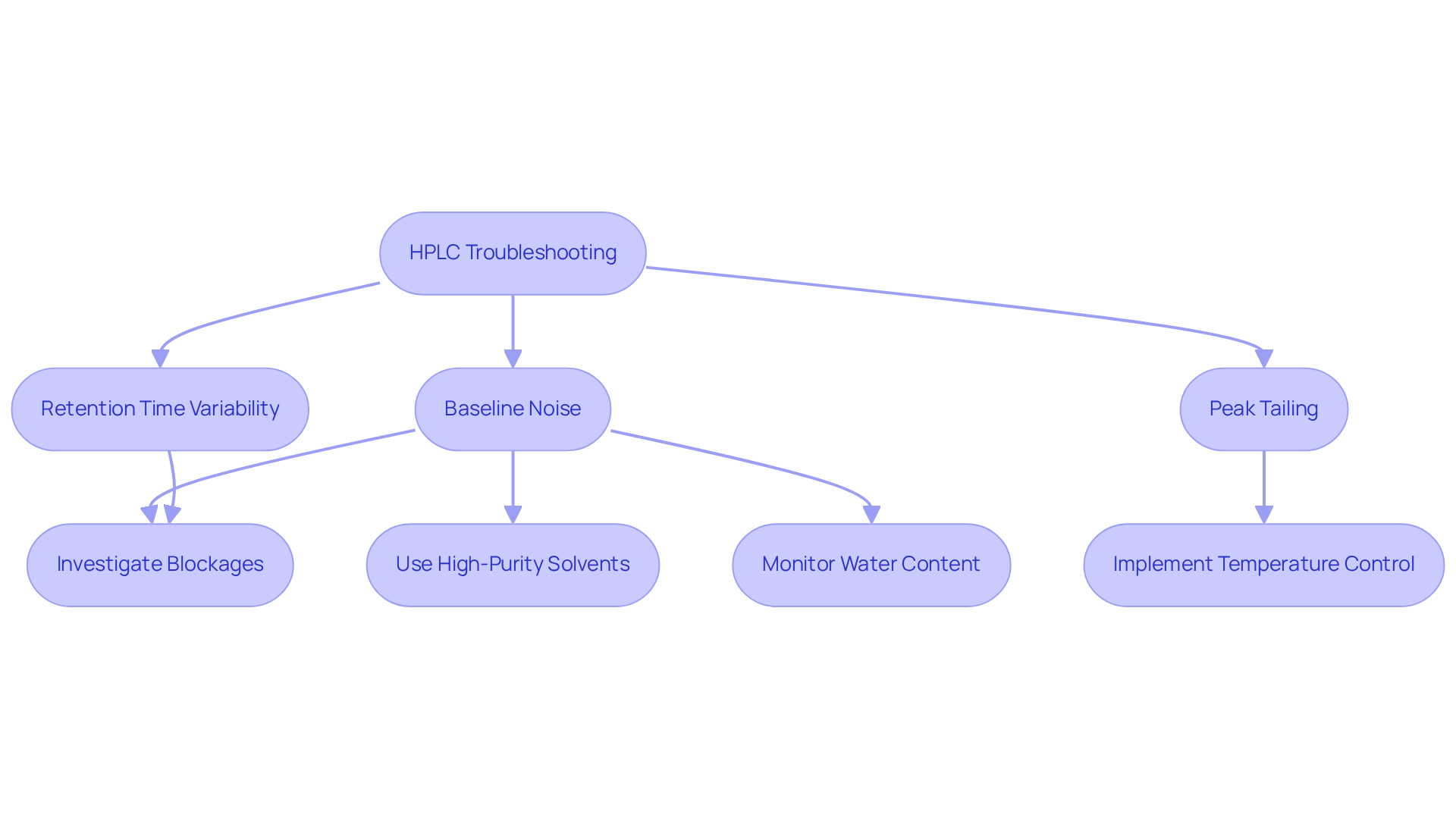
Solvent Selection in Normal Phase HPLC: Key Considerations
Selecting the right solvents for a normal phase HPLC column is crucial for achieving optimal separation and resolution. Non-polar solvents, such as hexane or ethyl acetate, serve as effective mobile phases. When choosing a solvent, it is essential to consider the polarity of the analytes and their solubility in the chosen solvents. Moreover, employing gradient elution can significantly enhance separation efficiency by allowing for a more controlled release of analytes from the stationary phase. Laboratories must experiment with various solvent combinations to identify the most effective pairings tailored to their specific applications.
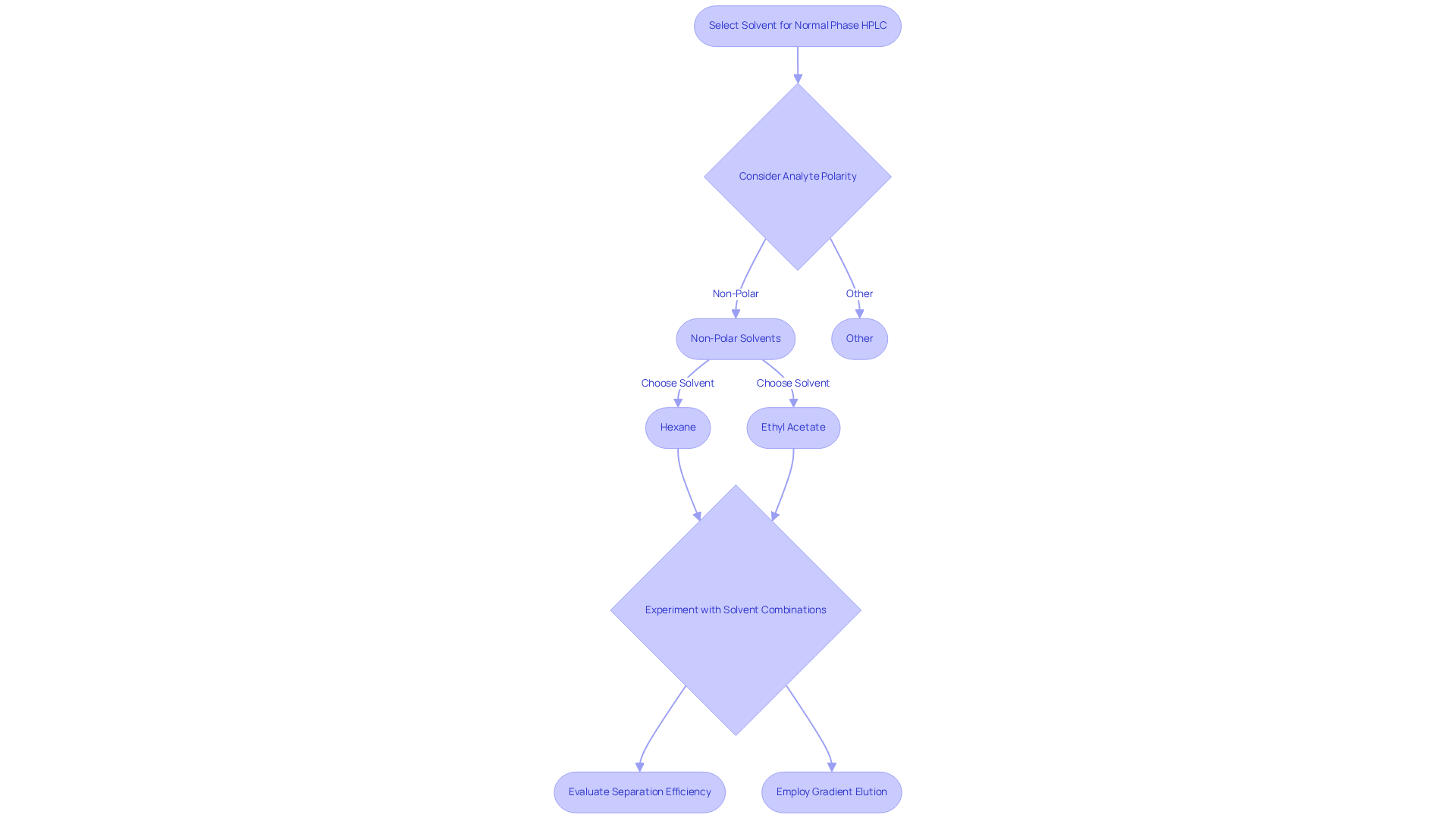
Method Validation for Normal Phase HPLC: Ensuring Compliance and Accuracy
Method validation is crucial for the normal phase HPLC column, ensuring compliance with regulatory standards and the accuracy of analytical results. Key parameters for validation encompass:
- Specificity
- Precision
- Accuracy
- Robustness
For example, to adhere to industry standards, intraday and interday precision must not exceed 2% across all concentrations. Laboratories are required to conduct thorough testing to confirm that their methods produce reliable results under varying conditions. This rigorous validation process not only fulfills regulatory obligations but also bolsters the credibility of the facility's analytical capabilities.
According to the FDA's guidelines, analytical procedures must satisfy standards of accuracy, sensitivity, specificity, and reproducibility to be considered suitable for their intended purposes. Regular reviews and updates to validation protocols are essential for adapting to evolving standards and technological advancements, ensuring that laboratories sustain their competitive edge in the pharmaceutical industry.
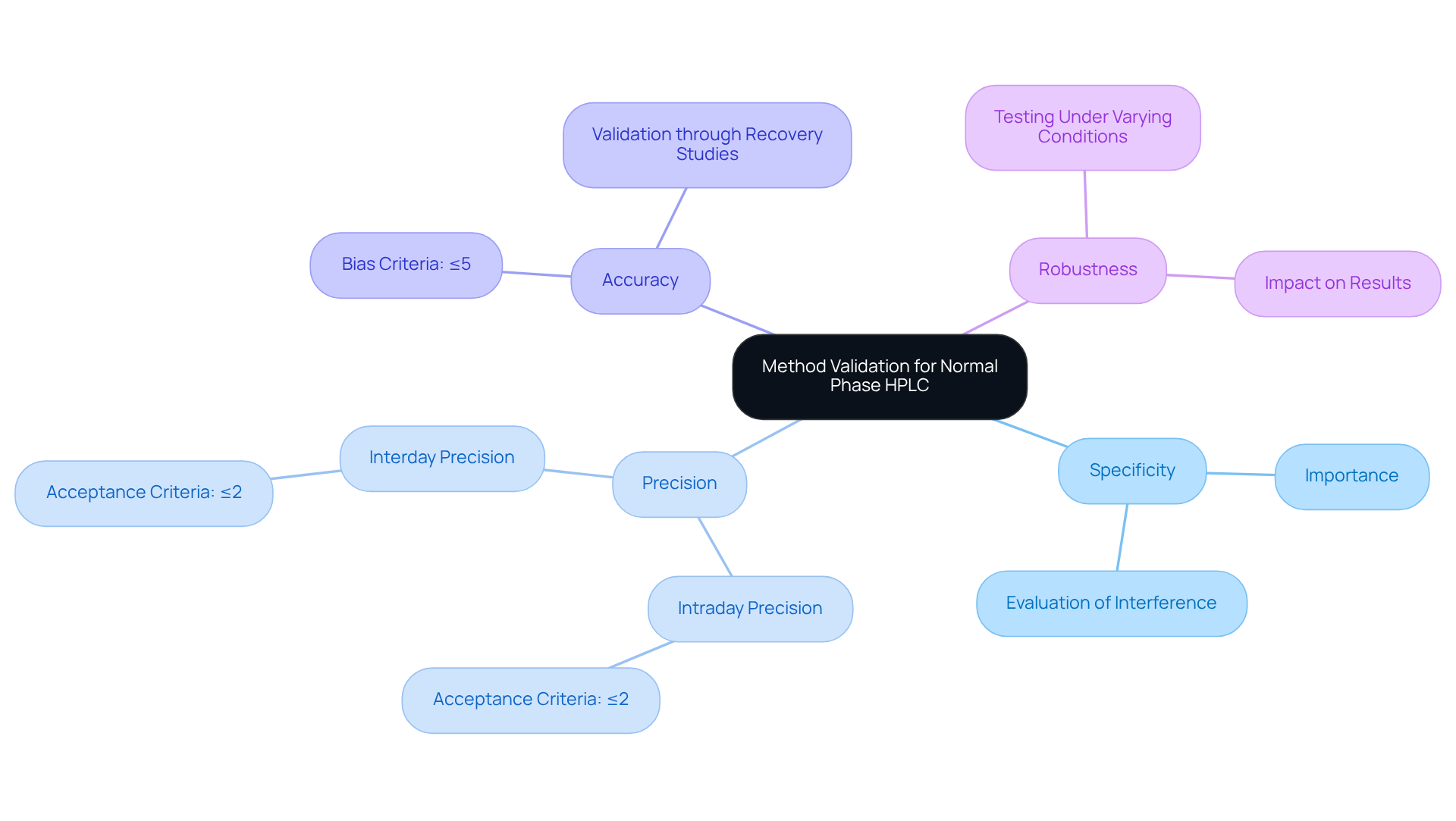
Future Trends in Normal Phase HPLC: Innovations and Developments
The future of standard normal HPLC is poised for significant innovation, as advancements in column technology and solvent systems are set to enhance both performance and efficiency. Emerging trends highlight the development of more robust stationary phases capable of withstanding harsher conditions, alongside the integration of automation in method development and analysis.
Furthermore, the increasing emphasis on sustainability is propelling research into greener solvents and techniques aimed at reducing environmental impact. Laboratories that adopt these trends will likely experience enhanced analytical capabilities and operational efficiencies, positioning themselves as leaders in the field.
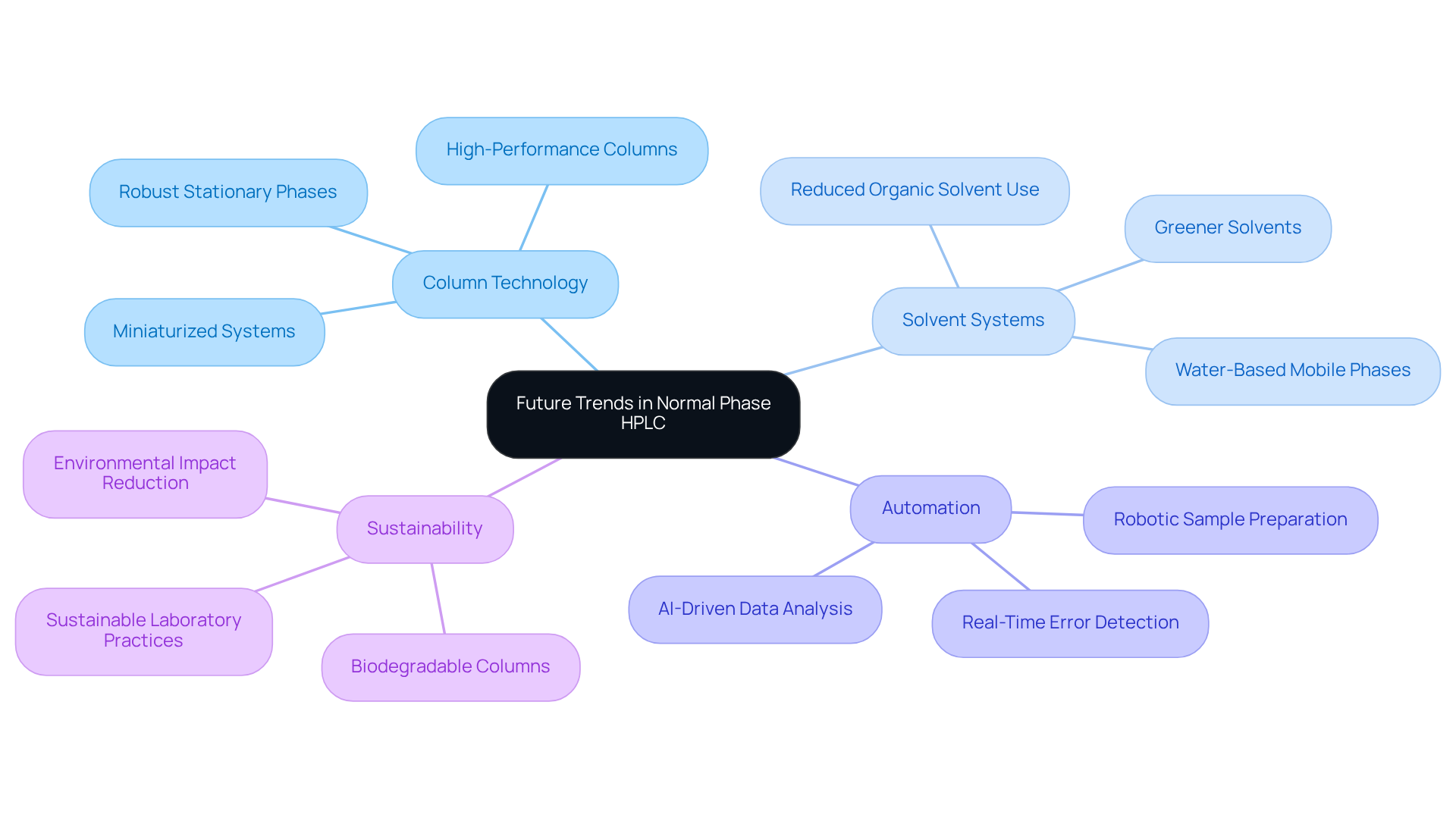
Conclusion
The advantages of normal phase HPLC columns are evident, underscoring their critical function in laboratory environments, particularly within the pharmaceutical and environmental analysis sectors. By employing polar stationary phases, these columns enable the efficient separation of lipophilic compounds, thereby enhancing both the resolution and reproducibility of analytical results. The dedication of companies like JM Science to high-performance solutions further emphasizes the significance of these columns in optimizing laboratory workflows and adhering to stringent regulatory standards.
Throughout this discussion, the key benefits of normal phase HPLC columns have been elucidated, including:
- Their capacity to isolate complex mixtures
- Their efficacy in drug formulation analysis
- The imperative for thorough maintenance and method validation
Moreover, the examination of prevalent challenges and the significance of solvent selection illustrates the nuanced approach necessary to fully leverage this chromatography technique.
As laboratories progress, embracing innovations and sustainability trends will be vital for augmenting analytical capabilities. By prioritizing the integration of advanced technologies and practices in normal phase HPLC, laboratories can enhance their operational efficiencies and position themselves as leaders in the field. Embracing these advancements will ensure they remain at the forefront of analytical chemistry, paving the way for future breakthroughs and improved performance across various applications.




